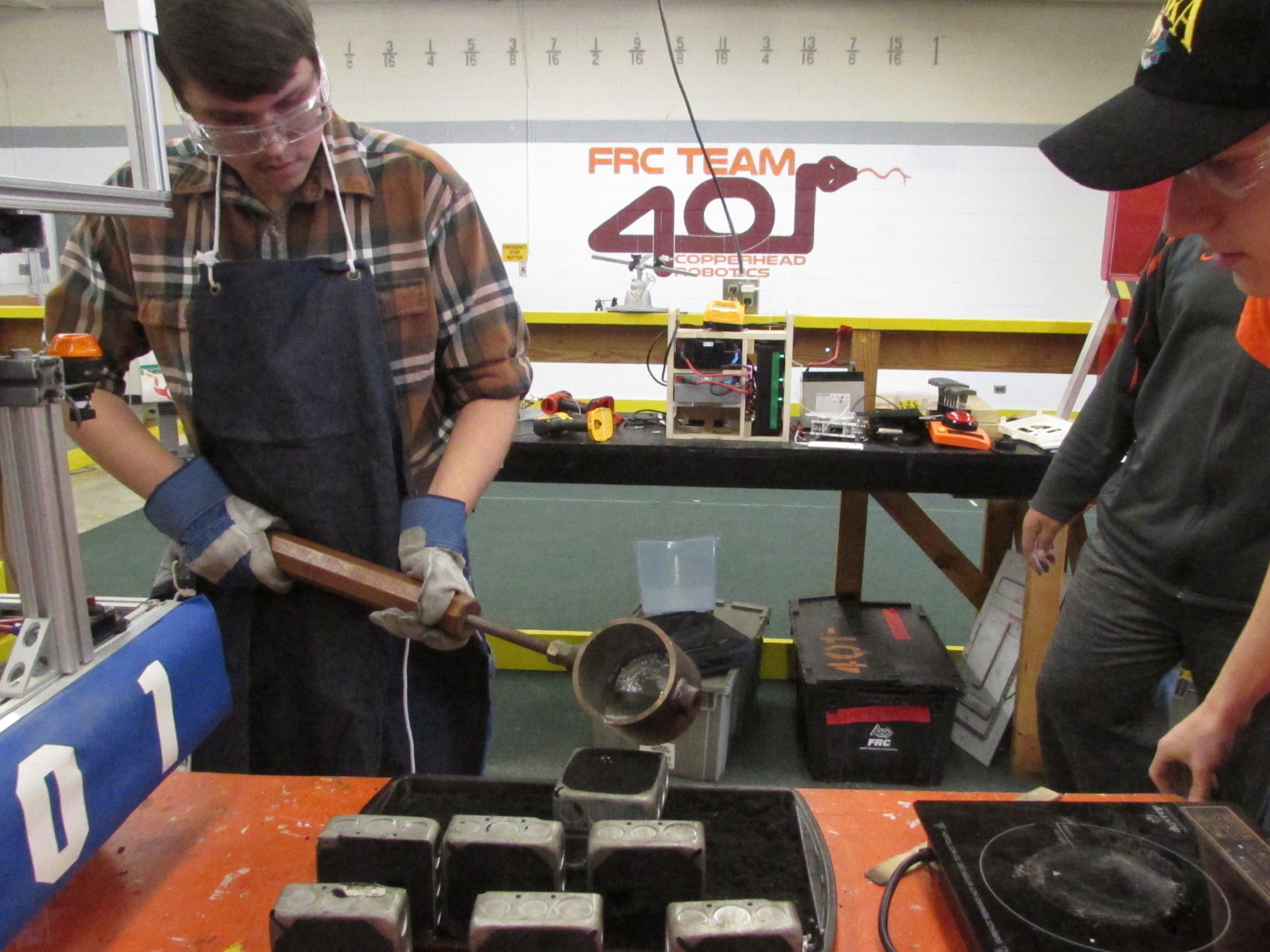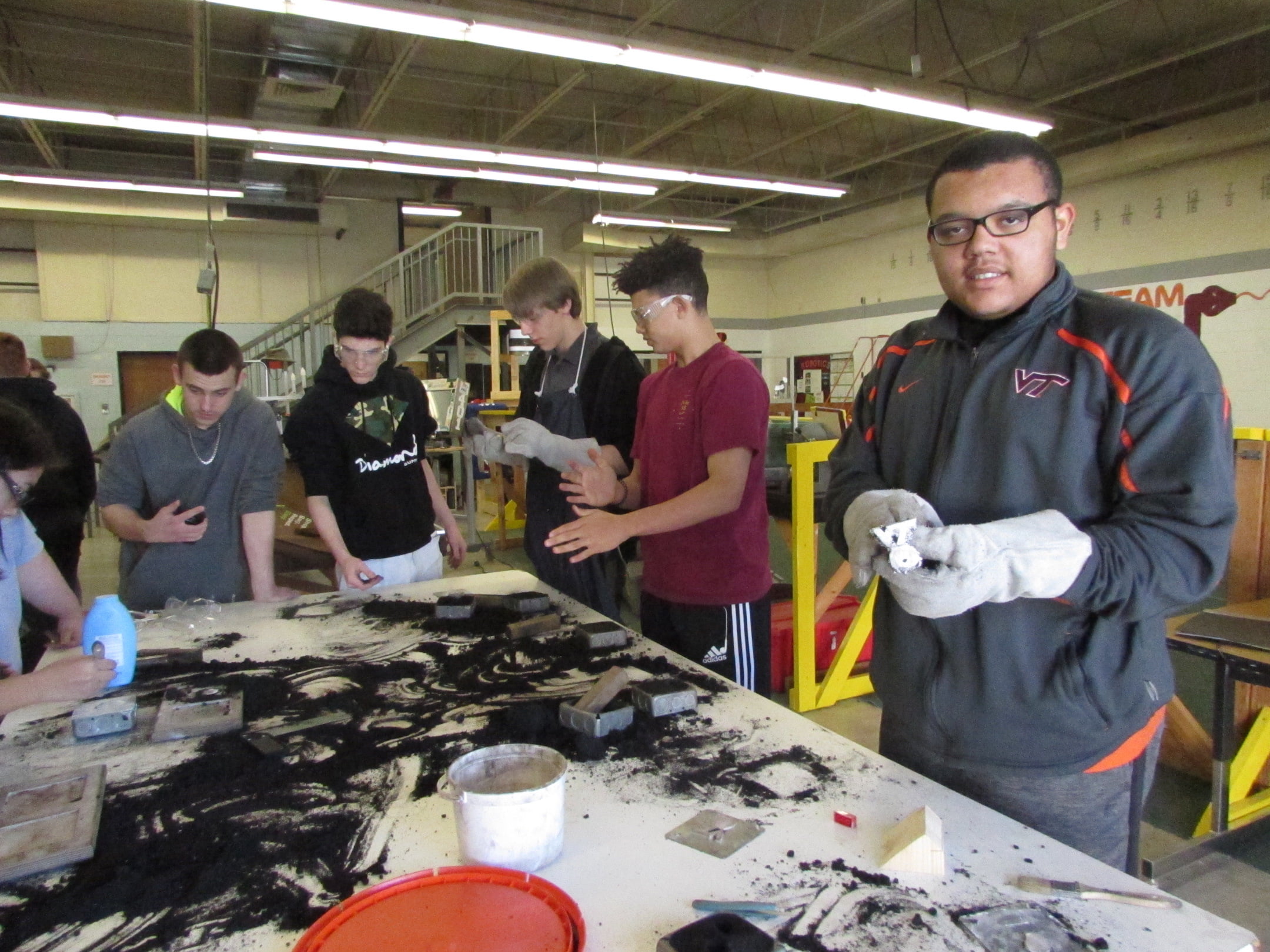
Christiansburg High School student Cole Curtis pours molten metal into his casting mold.
The Virginia Tech Student Chapter of the American Foundry Society came for a visit to the Robotics One and the Materials and Processes of Manufacturing classes at Christiansburg High School Dec. 1. The VT students hosted a high school level “Foundry-in-a-Box” program.
Reece Stone, one of three VT students, provided high school students with basic knowledge about foundry techniques for metal casting: sand, investment, die casting, lost foam and continuous casting.
The specific uses of each foundry technique along with the positive and negative implications were discussed. Types of materials poured in foundry include grey iron, steel iron, aluminum, titanium and nickel. Examples of everyday items using these materials were examined.
The classes of students were introduced to the foundry casting process. A shape of the desired part is made in a sold pattern.
More complex designs are made in two parts called a split pattern with an upper section called a cope and a bottom section called a drag. As metal cools, it shrinks.
A mold must be designed to accommodate for pouring of the liquid metal and have a riser to allow for proper flow.
The VT students guided the CHS students through a hands-on demonstration. A metal plate had a VT pattern onto which students brushed on talcum or baby powder. The plate was then covered with an open metal electrical outlet box.
Student took handfuls of sand to pack tightly into the outlet box i.e. the drag. Another outlet box was also packed with sand and a rod was inserted to make a sprue, the hole to pour the hot liquid metal. The metal pattern plate was removed and the cope was placed on top of the drag.
Meanwhile VT-AFS Bryan Staha was heating bars of metal up to 300 degrees to liquefy on a portable furnace. All students are dressed in safety equipment before the pouring of the molten metal. The metal is allowed to cool before the students separated the mold and began digging out the sand to reveal a three dimensional VT.
Stone said, “It is like a fossil dig to remove all the sand. It is good to see high schoolers get excited about this Foundry –in-a-Box.”

The VT-AFS students helped CHS students understand the procedures and complications of sand casting throughout the class block. With extra time, the students and their teacher, Dr. Nancy Boerth, tried sand-casting other shapes, like Legos and a rubber duck.
The VT-AFS holds monthly meetings at the university and organizing “Foundry-in-a-Box” events for local high schools. The chapter’s outreach and the Foundry-in-a-Box” program was featured in the AFSs Piedmont Chapter’s November Newsletter as a way to advocate, educate and innovate more students towards an activity or an industry carrier in metal casting.
Stone said, “We hope to offer this type of program to middle and even elementary school students.”
Boerth said, “This hands-on approach is eye- opening to students. We appreciate VT-AFS for coming out. They were really interesting young people.”




